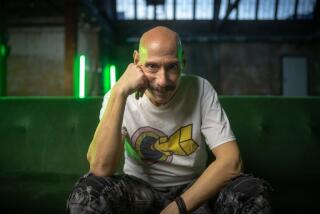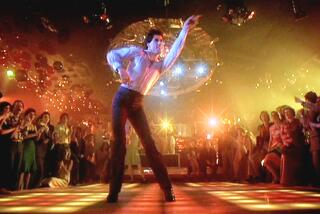MOCA show to examine disco music’s influence on art and culture
L.A.’s Museum of Contemporary Art may not be well-endowed financially, but it’s getting ready to shake its booty nevertheless: An upcoming exhibition will examine the cultural impact of disco music, according to a report Tuesday by the New York Observer’s GalleristNY blog.
Basing his post on an interview Monday with museum Director Jeffrey Deitch, blogger Michael H. Miller reported that the exhibition, “Fire in the Disco,” will be co-curated by James Murphy of the now-disbanded dance-rock group LCD Soundsystem. Deitch told the blog that he’s been talking to Murphy about the project for nearly a year, and it’s “quite far along in … development,” although no date has been set. Live music and DJs will be included.
A MOCA spokeswoman confirmed Tuesday that the show is “in development,” but said no further details were available.
Deitch likened 1970s disco to Cubism as a movement that began in an urban subculture and “within a few years spread all around the world.” Disco influenced fashion, film and art as well as music, he said, while having “a tremendous impact on gay liberation [and] the connection between black, white [and] Hispanic. It became a universal language.”
Plans for the exhibition call for a series of rooms replicating some of history’s famous discos, including objects from the original dance clubs.
Deitch cited the work of photographer Andreas Gursky and a flashing disco floor by Piotr Uklanski as manifestations of disco-related visual art.
The Gagosian Gallery’s website bio of Uklanski says that the Polish artist “emerged on the New York art scene in mid-90s with an emblematic artwork, the Untitled (Dance Floor) – a sculpture that integrates the legacy of minimalism with the blurring of art and entertainment that characterizes the current era.”
MOCA has taken some heat lately over the forced resignation of longtime chief curator Paul Schimmel, a move that confirmed the primacy of Deitch’s signature blending of visual art with youth-oriented pop culture over a traditional scholarly approach in which exhibitions focus mainly on artworks and art history.
A disco exhibition would seem to have some metaphoric resonance for the museum. Disco’s arrival was a hotly contentious turning point in pop music, because the new style’s emphasis on a rhythmic groove’s irresistible physical summons clashed with a 1960s and early ‘70s aesthetic that put melody and lyrics first. Critics (and many rock, folk, country and soul music fans) initially reviled disco, but the recent posthumous appreciations of star diva Donna Summer showed that it is now firmly entrenched in the pop-music canon -- not just for listeners keen to dance, but for a new generation of critics.
Could Deitch and the MOCA board be signaling their belief -- or wish -- that disco’s history will repeat itself in the realm of art museums?
MOCA bets on festival’s star power
MOCA: Eli Broad discusses ousting of Paul Schimmel
Critic’s Notebook: Seeing L.A.’s MOCA as a company -- therein lies the rub
More to Read
The biggest entertainment stories
Get our big stories about Hollywood, film, television, music, arts, culture and more right in your inbox as soon as they publish.
You may occasionally receive promotional content from the Los Angeles Times.











